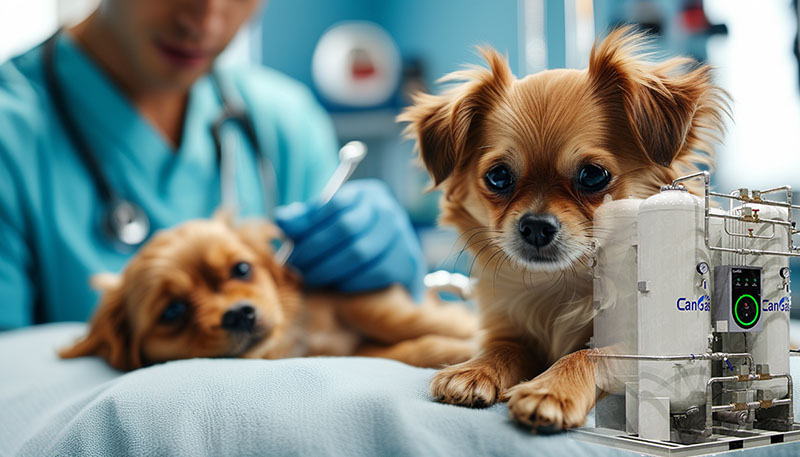In recent years, the number of pet owners in China has increased significantly, with pets becoming an integral part of many families, consistently providing positive emotional value. Simultaneously, consumption related to pets has grown across various sectors, including feeding, supplies, healthcare, and services. Some of these are genuine needs, while others are pseudo-needs. Pseudo-needs not only add financial burdens to pet owners but may also have adverse effects on pets.
One topic that has recently sparked controversy in the market is whether equipping pet hospitals with PSA oxygen generators to provide oxygen inhalation services for pets constitutes a "pseudo-need." The answer is negative. In fact, PSA oxygen generators play a crucial role in veterinary care. Specifically:
ICU/Recovery Cage Oxygen Supply
For critically ill pets (e.g., severe metabolic organ damage, severe pneumonia, extreme dehydration, large traumatic injuries), continuous oxygen supplementation may be necessary.
Emergency Oxygen Supply
In emergency cases (e.g., traffic accident hemorrhage, shock, acute heart failure, heatstroke, stress), immediate oxygen replenishment combined with other treatments is essential for resuscitation.
Anesthesia Machine Oxygen Supply
As a vital component of major surgeries, stable oxygen supply devices matching anesthesia machines are critical. Reliable oxygen delivery enhances anesthesia stability and ensures smooth surgical procedures.
Postoperative Oxygen Supply
After surgery, pets remain under anesthesia. Rational oxygen inhalation helps increase blood oxygen levels and accelerates recovery from anesthesia, significantly aiding postoperative healing.
However, when equipping pet hospitals with PSA oxygen generators, it is essential to ensure the equipment meets practical requirements:
● Oxygen Purity: PSA oxygen generators should produce high-purity oxygen (93±3%) to effectively oxygenate both small and large pets.
● Continuous Oxygen Supply: Equipment must provide stable, uninterrupted oxygen flow to meet the pet hospital's ongoing demands, typically requiring 24/7 operational capability.
● Automated Alarms: Units with automatic alarms reduce staff workload by alerting operators to issues like low oxygen levels or power outages, preventing disruptions in pet treatment.
● Portability: Pet hospital PSA oxygen generators should feature compact size, lightweight design, low noise, and ease of movement.
● User-Friendly Operation: Devices should be simple to install and operate, allowing quick access to adjusted oxygen purity levels for diverse applications (e.g., anesthesia, postoperative care, ICU, emergencies).
● Easy Cleaning: Given the unique environment of pet hospitals, equipment must have easy-to-clean surfaces and hair-resistant air intake filters to prevent contamination.
In conclusion, PSA oxygen generators equipped in pet hospitals must deliver high-purity oxygen and stable supply capabilities. Such devices enhance veterinary medical service quality and play a vital role in ensuring pet health and welfare.


